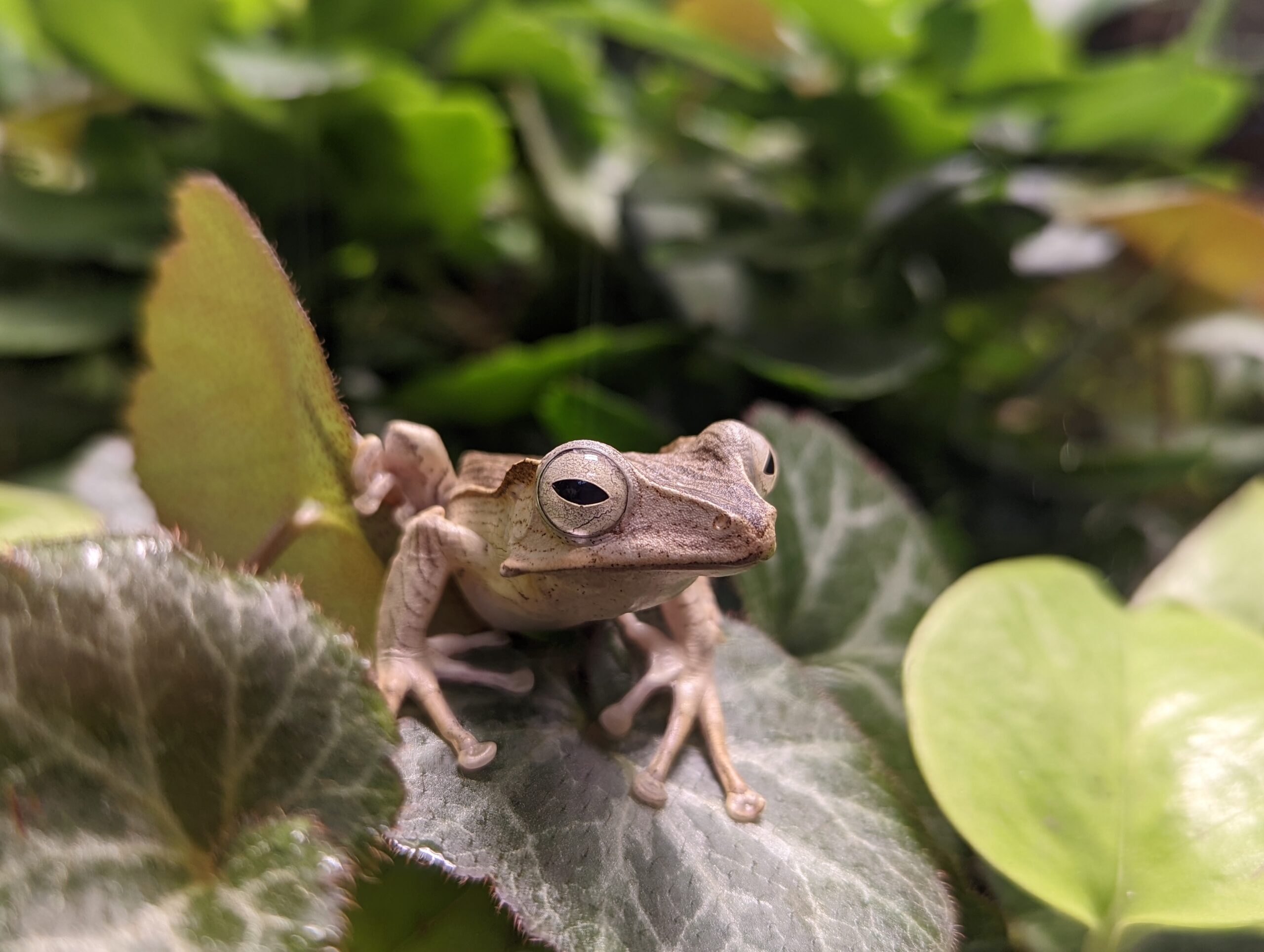Summary of Borneo eared frog:
This content is about the Borneo-Eared Frog, also known as Polypedates otilophus. It provides information about the appearance, habits, diet, and conservation status of the frog. The Borneo-eared frog is a nocturnal or crepuscular species generally found near water. It is not poisonous and feeds on insects, other invertebrates, and smaller frogs. The frog lays its eggs in a foam nest above water, and the tadpoles undergo metamorphosis in 8-10 weeks. The population of the Borneo-eared frog is decreasing. Still, it is currently listed as Least Concern on the IUCN Red List due to its wide distribution and tolerance for habitat modification. The main threats to its population are deforestation and collection for the pet trade. The content also mentions other animals from Asia and provides information about browsing animals by region and class.
The BBorneo-eared frog, scientifically known as Polypedates octopus, is a fascinating amphibian found in the biodiverse forests and wetlands of Borneo, Indonesia, and Malaysia. This unique frog species has several interesting features and behaviors that make it stand out among its amphibian counterparts.
Let’s dive into the world of the Borneo-eared frog and explore its captivating characteristics.
1. Nocturnal or Crepuscular Creature
The Borneo-eared frog is primarily active during the night or twilight hours. It is considered a nocturnal or crepuscular creature, meaning it is most active during these low-light conditions. This adaptation allows the frog to avoid predators and take advantage of the cooler temperatures and abundant food sources during these times.
2. Arboreal Lifestyle
These frogs are commonly found in forested areas and are highly adapted for an arboreal lifestyle. They can be seen clinging to vegetation a few yards from the ground. The ability to climb and live in the trees helps them avoid ground-dwelling predators, access food sources, and find suitable mating partners.
3. Unique Vocalizations
Like many species of frogs, the Borneo-eared frog relies on vocalizations to communicate. Males produce a distinct calling sound to attract females during the breeding season. The call of the BBorneo-eared frog is unique, with a series of short musical notes that create a mesmerizing chorus in the forests. Females respond to these calls by engaging in a behavior known as toe-tapping, where they tap their hind legs on leaves or branches.
4. Foam Nest Builders
One of the most fascinating aspects of the BBorneo-earedfrog’s reproductive behavior is its ability to construct foam nests. During the breeding season, females lay their eggs in a mass of foam that they create by whipping secretions from their skin with their hind legs. This foam nest is then attached to vegetation above water bodies, such as ponds or streams. It protects the developing eggs and allows them to hatch in a safe environment.
5. Tadpoles and Metamorphosis
Once the eggs are laid in the foam nest, they remain there until they hatch. When the eggs hatch, the tadpoles fall into the water below. These tadpoles feed primarily on algae and other organic matter found in the water. They undergo a process of metamorphosis, gradually transforming into froglets over 8-10 weeks. This transformation involves the development of legs, the loss of the tail, and the adaptation of lungs for breathing air.
6. Dietary Preferences
The Borneo-eared frog has a versatile diet that consists mainly of insects and other invertebrates. They are skilled hunters, using their sticky tongues to catch prey in their natural habitat. Additionally, smaller frogs are also known to be a part of their diet. As tadpoles, they primarily feed on algae found in the water bodies they inhabit.
7. Conservation Status
Regarding conservation status, the Borneo-eared frog is listed as “Least Concern” by the International Union for Conservation of Nature (IUCN) Red List. This indicates that the species is not currently facing any significant threats to its survival. However, the population is decreasing in certain areas due to habitat destruction caused by the clear-cutting of rainforests for timber and the expansion of oil palm plantations. The species is also collected for the pet trade, which can impact wild populations if not properly regulated.
In conclusion, the BBorneo-eared frog is a captivating creature with unique characteristics and behaviors. From its nocturnal and arboreal lifestyle to its foam nest building and distinct vocalizations, this amphibian showcases the wonders of nature in its remarkable way. While the species faces certain conservation challenges, its widespread distribution and adaptability offer hope for its long-term survival. By appreciating and understanding the intricacies of the BBorneo-eared frog, we can contribute to its conservation and protect its natural habitats for generations to come.

